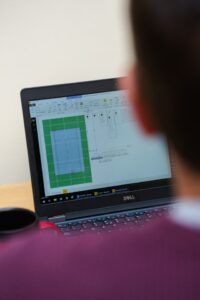A guide to boosting efficiency and customer experience with indoor location tracking

Photo by ThisisEngineering on Unsplash
In an era where customer experience is crucial for business success, mastering indoor location tracking can be a game-changer. This advanced technology offers a myriad of benefits, from improving operational efficiency to enhancing customer satisfaction. If you’re a business owner or manager looking to optimize your operations and delight your customers, this guide is for you. We’ll explore how indoor location tracking works, its benefits, the importance of choosing the right provider, and practical tips to integrate this technology seamlessly into your business. By the end of this post, you’ll have a clear roadmap to leverage indoor location tracking for maximum impact.
Understanding indoor location tracking
Indoor location tracking is a technology that allows businesses to monitor and analyze the movement and behavior of people within a confined space. Using a combination of sensors, beacons, and software, it provides real-time data on location, dwell time, and movement patterns. This information is invaluable for making informed decisions about layout, staffing, and customer service. For instance, retailers can optimize store layouts based on foot traffic, while hospitals can track the location of critical equipment. The applications are vast, and the potential for enhancing efficiency and customer experience is significant.
Choosing the right provider
When selecting an indoor location tracking provider, it’s essential to assess their technology, expertise, and support services. A reputable provider should offer a robust solution that integrates seamlessly with your existing systems while delivering accurate and actionable data. Consider options that provide flexibility and scalability to adapt to your evolving business needs. For example, Pozyx indoor location tracking is renowned for its precision and ease of use, making it an excellent choice for businesses looking to enhance their location-based services. Furthermore, evaluate the level of customer support provided, as having a reliable partner can significantly impact your success in implementing this technology effectively.
Enhancing operational efficiency
One of the most significant benefits of indoor location tracking is the ability to boost operational efficiency. By monitoring employee movements and workflows, businesses can identify bottlenecks and inefficiencies. For example, in a warehouse setting, tracking the movement of goods and staff can highlight areas where processes can be streamlined. This leads to faster order fulfillment and reduced labor costs. In a healthcare environment, tracking the location of medical staff and equipment can minimize wait times and improve patient care. The real-time data provided by indoor location tracking enables businesses to make data-driven decisions that enhance overall efficiency.
Improving customer navigation
For businesses like retail stores, museums, and large office buildings, customer navigation is a critical aspect of the overall experience. Indoor location tracking can significantly improve the way customers find their way around. By providing real-time directions and maps via mobile apps, businesses can ensure customers reach their desired locations quickly and easily. This technology can also highlight points of interest, special offers, and promotions, further enhancing the customer experience. Imagine walking into a mall and receiving a notification directing you to a sale on your favorite brand—such personalized experiences are possible with indoor location tracking.
Optimizing space utilization
Effective space utilization is vital for maximizing the return on investment for any physical location. Indoor location tracking provides detailed insights into how different areas are used, allowing businesses to optimize layouts and resource allocation. For instance, office buildings can monitor the usage of meeting rooms and workstations to ensure they are used efficiently. Retailers can analyze foot traffic patterns to determine the best placement for products and displays. By understanding how space is utilized, businesses can make informed decisions to enhance productivity and customer satisfaction.
Enhancing security measures
 Security is a top priority for any business, and indoor location tracking can play a significant role in enhancing safety measures. By monitoring the movement of people and assets, businesses can quickly identify and respond to security threats. In a retail environment, for instance, tracking the movement of high-value items can help prevent theft. In an office building, monitoring access to restricted areas can ensure that only authorized personnel enter. The real-time data provided by indoor location tracking allows businesses to act swiftly in response to security incidents, ensuring the safety of both customers and employees.
Security is a top priority for any business, and indoor location tracking can play a significant role in enhancing safety measures. By monitoring the movement of people and assets, businesses can quickly identify and respond to security threats. In a retail environment, for instance, tracking the movement of high-value items can help prevent theft. In an office building, monitoring access to restricted areas can ensure that only authorized personnel enter. The real-time data provided by indoor location tracking allows businesses to act swiftly in response to security incidents, ensuring the safety of both customers and employees.
Indoor location tracking offers a wealth of opportunities for businesses to enhance efficiency and customer experience. From optimizing operational workflows to improving customer navigation and security, the benefits are far-reaching. By choosing the right provider and integrating this technology seamlessly into your operations, you can unlock new levels of performance and satisfaction. We hope this guide has provided valuable insights into the potential of indoor location tracking. To take the next step, consider exploring providers, setting clear objectives, and implementing pilot projects to see firsthand the impact this technology can have on your business.

